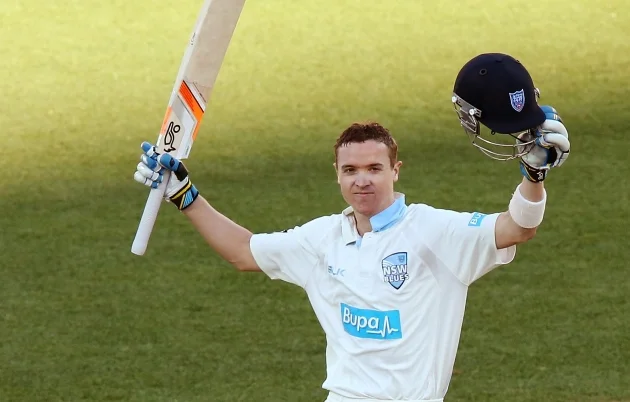It was the season of 2009 and I was playing in my SUCC debut. I was a baby faced, long haired teen, fresh from completing my HSC and making the long trip out to Blacktown. My first thought on arrival was that I hoped that this was the furthest that I would need to travel for a game of Grade cricket. At the completion of the match I was sitting in the sheds taking part in my first ever fines meeting. After being fined for scoring a handful of runs and taking a few catches, the then 4th grade captain Dan Bragg looked at me, considered me for a moment and then fined me for looking like a particular electronic plush toy that went through great popularity in the early 2000’s. This was met with a furore of excitement and approval by the majority of the team, in particular Ben Joy (yes he was playing 4th grade) who had obviously been contemplating the same thought throughout the day. This unfortunate moment spawned my SUCC nickname which has stuck with me ever since. So much so that my real name has become redundant and I am confident that there are a many members of the club that do not actually know what it is.
As all males will know, it is almost impossible to be involved in a large group of guys without being given some sort of nickname. Sydney Uni Cricket Club is no different. A nickname is said to be a substitute for the proper name of a person, usually to show affection or ‘gentle’ ridicule.
Now in the case of SUCC, nicknames are given for a few different reasons. Some can be as simple as the opposition writing your name in the scorecard incorrectly; e.g. Max ”Pope” Hope, Lewis “McMayhem” McMahon.
Some are just obvious; e.g. Marty “Hector” Paskal, Ben “Barnaby Joyce” Joy, Jack “Super Coach” Gibson.
Some are spawned out of aggressive eating habits or the sheer size of the vessel; e.g. Tom “2 plates” Kierath. Adam “Ship” Theobald, Nick “Truck” Arnold.
(It has long been a challenge to “Sink the Ship” at a long lunch or a Surjits dinner, I don’t think that this feat will ever be achieved).
Whilst others have an array of nicknames which can be used in constant rotation to confuse both the victim as well as others that do not know their real name; e.g. Dave “Milf”/”Milfred”/”Funky”/”Deef” Miller.
However, I think that the most common form of nickname within SUCC is those that like mine, make reference to someone or something that they look like or impersonate in some way. So to list just a handful, we have:
Dugald “Screech” Hollway – in reference to his striking resemblance to the popuar “Saved by the Bell” Character
Ryan “Sid” Kurtz – in reference to his resemblance of Sid the sloth from “Ice Age”
Mark “Alf” Faraday – Go and look up the TV show
Henry “Wario”/”Wrongsy” Clark – If you have ever played Mario Kart you will understand the former. The latter is a reference to his bowling style of bowling off the wrong foot. NB: Will Hay once described him to the umpire as bowling “right arm, wrong leg”.
Tim “Plugger” Ley – due to his prowess with the AFL ball
Ash “Crouchy” Cowan – in reference to his physical similarities to the journeyman football striker Peter Crouch. N.B. “Harry Potter”, and “Beer Mat” will also play.
Ed ”Poodle” Cowan & Greg “Junk” Mail – yep even the big dogs get them
Will “Voldemort” Clayton – but we don’t like to talk about this one
And one of my personal favorites Nigel “Ned Flanders” Cowell – this one is pretty self-explanatory.
Some more miscellaneous tags include the three Griffins, i.e. Ben “Stewy” Larkin, Nick “Chris” Larkin, and James “Meg” Larkin (unlucky Jum). Nicko may also be referred to as “Seagull” due to his uncanny ability to snaffle up a stray potato chip.
A few of the rarer characters at the club have been granted with some of the better nicknames going around. We have Jonno “Bird Shit Bill” Craig-Dobson, due to the large patch of white hair on his roof, Jack “Eric” Holloway, in reference to the famous Equatorial Guinean swimmer suggesting that in his early days he played the same sport but wasn’t quite at the same level as everyone else (this one is a bit stiff).
And of course the two Ryans; Firstly, Jim “Carpaccio” Ryan, just because he needs a few more minutes each side on the BBQ to cook out the rareness. And secondly, one of the most famous in SUCC history Josh “Rig”/”Bryan” Ryan. The former was initially a nickname for his aggressively large automobile and then subsequently in reference to his aggressively large abs/chest which were toned during countless hours on the bench press.
These are just a small selection of the many nicknames that get thrown around at SUCC. All in all, they may have been born out of ridicule but we carry these names on with a certain fondness and endearment towards the, for lack of a better word, victims, and it is all part of belonging to this great club.
So if you are a new player at the club without a nickname, give it a couple of games or indeed a couple of club circuits or a tour and you will most likely have a great nickname that will be your tag for years to come.






